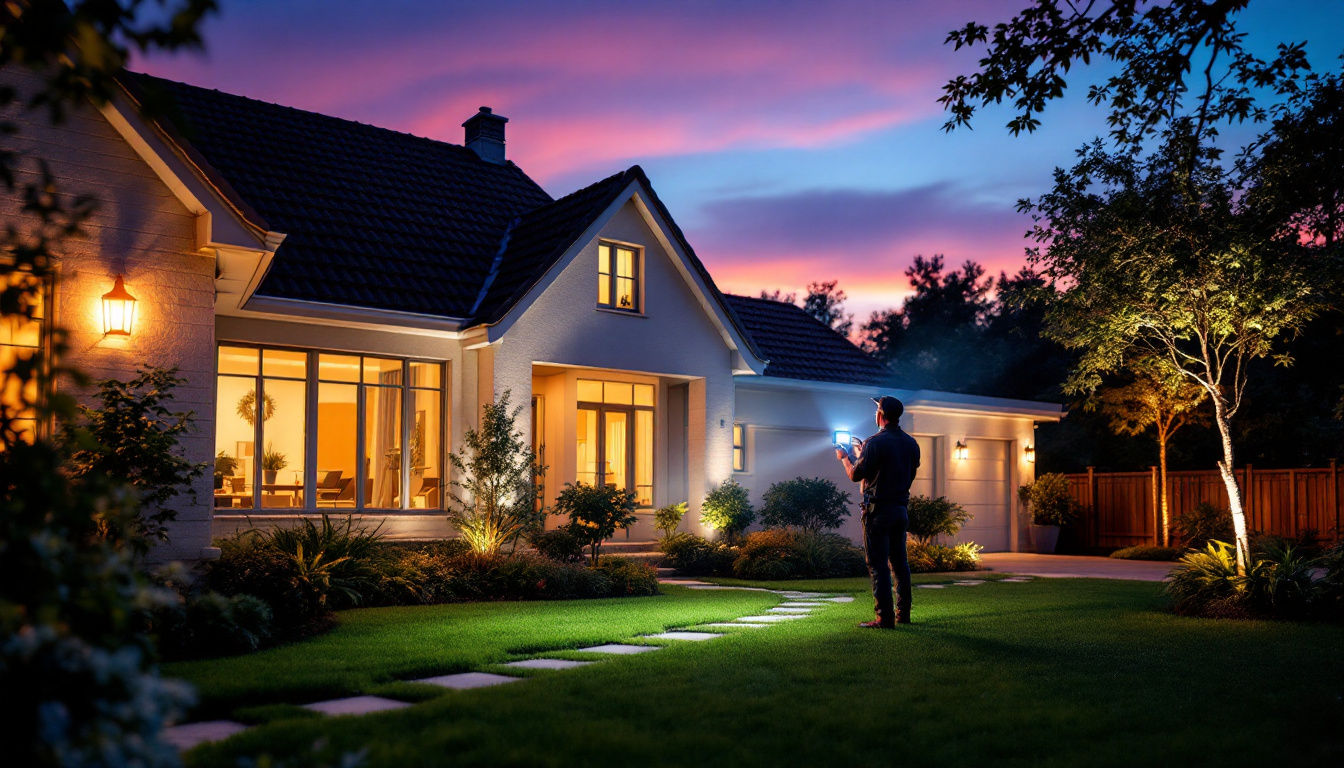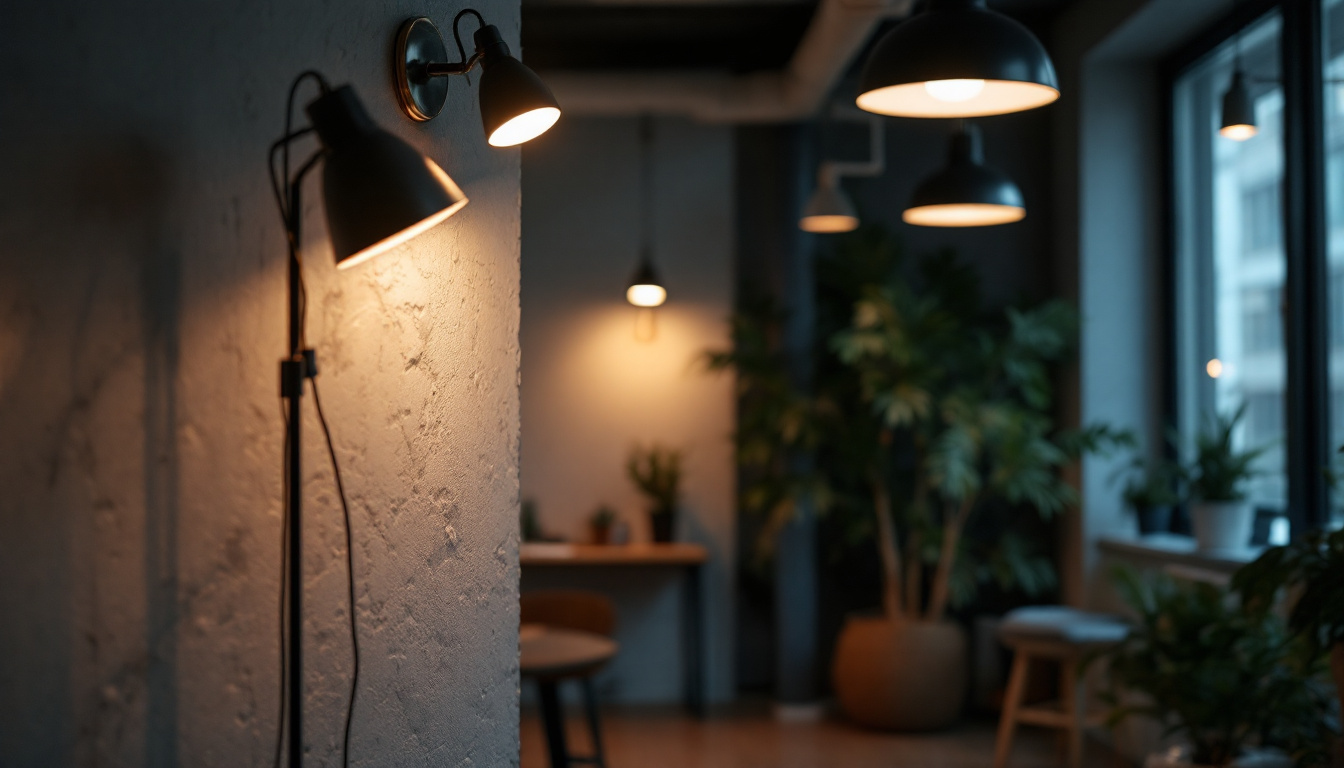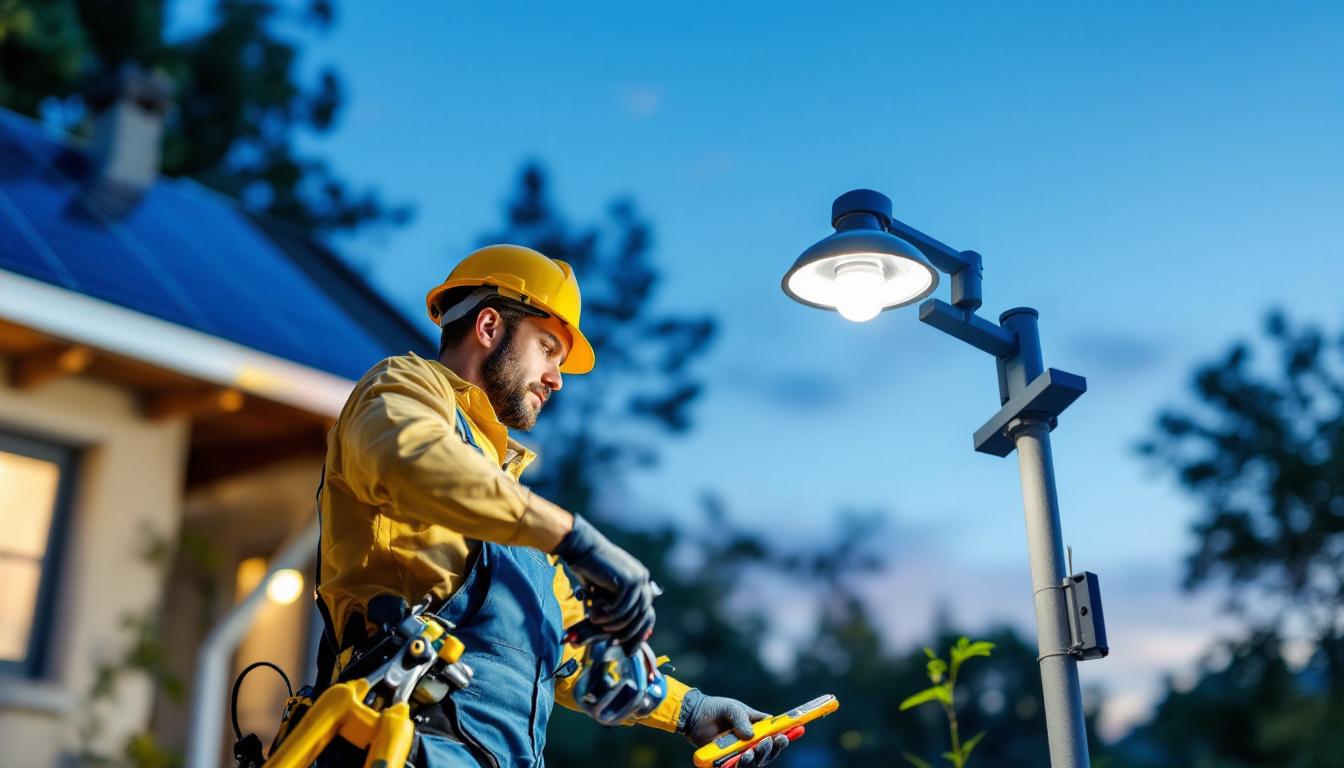
In the realm of outdoor lighting, LED flood lights have emerged as a game-changer for both residential and commercial applications. Their energy efficiency, longevity, and versatility make them an essential choice for lighting contractors. This article delves into the various aspects of LED outdoor flood lighting, highlighting the essential tools and equipment that contractors should consider for successful installations.
LED flood lights are designed to illuminate large areas with a broad beam of light. They are particularly effective in enhancing security, visibility, and aesthetics in outdoor spaces. Unlike traditional incandescent or halogen flood lights, LEDs consume significantly less energy and have a longer lifespan, making them a cost-effective solution in the long run.
One of the primary advantages of LED flood lights is their energy efficiency. They convert a higher percentage of electricity into light, resulting in lower energy bills for clients. Additionally, LEDs generate less heat, reducing the risk of overheating and fire hazards.
Another benefit is their durability. LED flood lights are typically constructed with robust materials that withstand harsh weather conditions, making them suitable for outdoor installations. Their long lifespan means fewer replacements, which is a significant advantage for contractors looking to build lasting relationships with clients. Furthermore, many LED flood lights come with advanced features such as motion sensors and dimming capabilities, which can enhance their functionality and adaptability in various settings.
LED flood lights are incredibly versatile and can be used in various applications. They are ideal for illuminating parking lots, sports fields, building facades, and outdoor event spaces. Furthermore, they can enhance security by providing bright lighting in areas that may otherwise be dark and uninviting.
Contractors can also utilize LED flood lights for decorative purposes, creating ambiance in gardens, patios, and other outdoor living spaces. The ability to choose from different color temperatures allows for customization, catering to the specific needs and preferences of clients. Additionally, LED flood lights can be integrated into smart home systems, allowing users to control lighting remotely via smartphones or voice commands, thus adding a layer of convenience and modernity to outdoor lighting solutions. This integration not only enhances the user experience but also promotes energy savings through intelligent lighting management.
To ensure a successful installation of LED flood lights, contractors must be equipped with the right tools. This section outlines the essential tools that every lighting contractor should have in their arsenal.
Every contractor should start with a set of basic hand tools. These include screwdrivers, pliers, wire strippers, and a utility knife. These tools are essential for securing fixtures, connecting wiring, and making adjustments during installation.
Additionally, having a good quality drill and drill bits is crucial for mounting flood lights securely. A cordless drill can provide the flexibility needed to work in various outdoor settings without the hassle of cords. It’s also beneficial to have a set of different drill bits, including masonry bits for concrete surfaces and wood bits for wooden structures, allowing for versatility in installation locations.
Electrical tools are vital for any lighting installation. A multimeter is an essential device for checking voltage, continuity, and current, ensuring that the electrical components are functioning correctly. This tool helps in troubleshooting issues that may arise during installation.
Wire connectors and electrical tape are also necessary for making secure and safe connections. Using heat-shrink connectors can provide additional protection against moisture and environmental factors, which is particularly important for outdoor installations. Furthermore, a wire crimper can be invaluable for creating strong, reliable connections, especially when working with stranded wire that requires a secure grip to prevent disconnections over time.
Safety should always be a priority when working with electrical installations. Contractors should invest in high-quality safety gear, including gloves, safety glasses, and hard hats. These items protect against potential hazards, ensuring a safe working environment.
Additionally, having a first aid kit on hand is advisable. Accidents can happen, and being prepared can make a significant difference in handling minor injuries quickly and effectively. It’s also wise to have a fire extinguisher nearby, especially when working with electrical components, as this can provide peace of mind in case of an emergency. Regularly reviewing safety protocols and conducting safety drills can further enhance the preparedness of the team, fostering a culture of safety on the job site.
In addition to basic tools, there are advanced tools that can significantly enhance the efficiency and quality of LED flood light installations. These tools not only streamline the installation process but also improve the overall outcome.
A laser level is an invaluable tool for ensuring that flood lights are installed at the correct height and angle. It provides a precise reference line, making it easier to align multiple fixtures uniformly. This tool is particularly useful for larger installations where consistency is key.
Using a laser level can also save time, as it reduces the need for repeated measurements and adjustments. Contractors can achieve a professional finish with minimal effort, impressing clients with the quality of their work.
For installations that require running electrical cables over long distances, cable pulling tools can be a lifesaver. These tools help in efficiently pulling cables through conduits or walls, minimizing the risk of damage to the cables.
Investing in a cable puller can significantly reduce installation time and effort, allowing contractors to focus on other aspects of the project. This efficiency can lead to increased customer satisfaction and repeat business.
Working in low-light conditions can be challenging, especially during evening installations. A Portable work light can illuminate the workspace, ensuring that contractors can see clearly while working. This tool not only enhances safety but also improves the quality of the installation.
Having a reliable source of light can help in identifying potential issues early on, allowing for timely adjustments. This proactive approach can prevent costly mistakes and ensure that the installation meets the highest standards.
With a plethora of options available in the market, selecting the right LED flood lights for a project can be daunting. Contractors must consider several factors to ensure they choose the best products for their clients’ needs.
The wattage of an LED flood light directly correlates with its brightness, measured in lumens. It is essential to assess the area that needs illumination and select fixtures that provide adequate brightness without being overly intense. A well-lit area enhances safety and usability, while excessive brightness can create glare and discomfort.
For instance, a parking lot may require higher wattage lights compared to a garden pathway. Understanding the specific requirements of each project will guide contractors in making informed decisions.
Color temperature is another critical factor to consider. LED flood lights are available in various color temperatures, typically measured in Kelvin (K). A lower Kelvin rating (2700K-3000K) produces warm white light, ideal for residential settings, while higher ratings (4000K-5000K) provide cool white light, suitable for commercial applications.
Contractors should discuss color temperature options with clients to ensure that the lighting complements the desired ambiance of the space. This consideration can significantly impact the overall aesthetic and functionality of the installation.
Given that LED flood lights are often installed outdoors, it is crucial to select products with appropriate weather resistance ratings. Look for fixtures with an IP (Ingress Protection) rating that indicates their ability to withstand moisture and dust. An IP65 rating, for example, signifies that the fixture is dust-tight and protected against water jets, making it suitable for outdoor use.
Investing in high-quality, weather-resistant LED flood lights ensures longevity and reliability, reducing the need for replacements and repairs in the future.
Successful installation of LED flood lights requires adherence to best practices that ensure safety, efficiency, and quality. Contractors should follow these guidelines to achieve optimal results.
Before beginning the installation, it is essential to plan the layout carefully. Assess the area to be illuminated and determine the optimal placement for each flood light. Consider factors such as the height of the fixtures, the angle of illumination, and potential obstructions that may cast shadows.
Creating a detailed plan can help in visualizing the final outcome and ensuring that all areas receive adequate lighting. This step is crucial for enhancing both functionality and aesthetics.
When connecting LED flood lights, it is vital to follow proper wiring techniques to ensure safety and functionality. Use appropriate gauge wires for the load, and make secure connections using wire nuts or connectors. It is also advisable to follow local electrical codes and regulations to avoid potential hazards.
Labeling wires can simplify future maintenance and troubleshooting, allowing for quick identification of circuits. This practice can save time and effort in case of repairs or upgrades.
After installation, testing the flood lights before finalizing the project is essential. Check for proper functionality, brightness levels, and any potential issues. Adjust the angle and height of the fixtures as needed to achieve the desired lighting effect.
Conducting a thorough inspection ensures that the installation meets the client’s expectations and adheres to safety standards. This final step can significantly enhance customer satisfaction and build trust in the contractor’s expertise.
LED outdoor flood lighting is an essential component of modern lighting solutions, providing energy efficiency, durability, and versatility. For lighting contractors, understanding the benefits and applications of LED flood lights is crucial for delivering high-quality installations that meet client needs.
Equipping oneself with the right tools, selecting appropriate fixtures, and adhering to best practices will ensure successful outcomes. By focusing on these aspects, contractors can enhance their reputation, foster client relationships, and ultimately grow their business in the competitive lighting industry.
Ready to elevate your lighting installations with the best LED flood lights on the market? Look no further than LumenWholesale. We provide lighting contractors with high-quality, specification-grade lighting products at unbeatable wholesale prices. Say goodbye to local distributor markups and hello to superior lighting solutions that meet the highest industry standards. With LumenWholesale, bulk buying is a breeze, and with free shipping, you can rest assured that you’re getting premium lighting at the best value — without any hidden fees. Don’t compromise on quality, affordability, or convenience. Wholesale Lighting at the Best Value is just a click away. Make the smart choice for your lighting projects and partner with LumenWholesale today.

Discover essential insights into area lights with our comprehensive guide tailored for lighting contractors.

Discover how industrial lighting products can significantly impact the profitability of lighting contractors.

Discover the pitfalls lighting contractors often face with high bay lighting installations.

Discover essential tips and best practices for lighting contractors to efficiently replace solar light bulbs, ensuring seamless installations and avoiding common pitfalls.